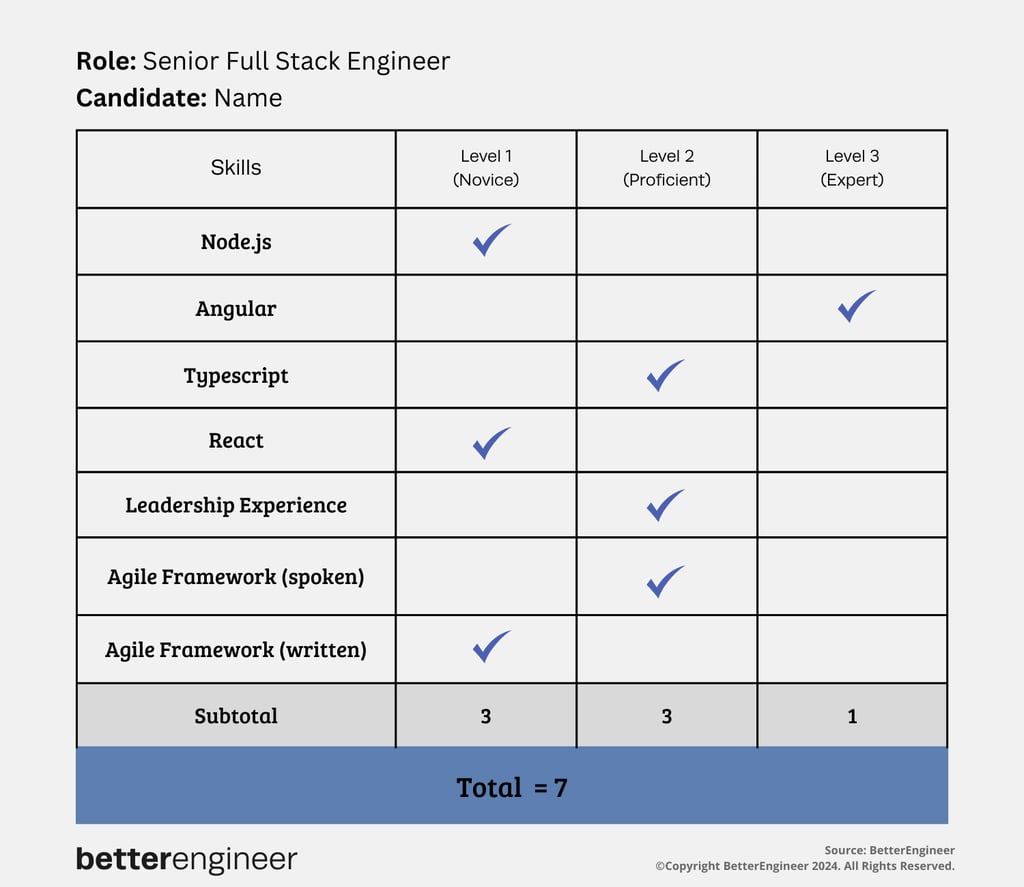- staff augmentation For Businesses
- Jan 28

Did you know that the tech industry is a leader in remote work adoption? It's no longer a trend but a well-established practice. In fact, a recent FlexJobs report indicates that 68% of tech workers now hold remote positions. This trend aligns perfectly with the Bureau of Labor Statistics projections: computer and IT occupations are expected to grow a significant 11% by 2029, exceeding the average growth rate across all occupations.
And for software developers, the job growth rate is a whopping 25 percent — so skilled software engineers are in high demand. Employers are increasingly finding that traditional hiring practices — from mostly local talent pools for onsite positions — aren’t sufficient to fill all available roles. What’s a hiring team to do?
If you have mainly (or only) hired for onsite or local roles, the prospect of recruiting and hiring remote software engineers may seem daunting. Here’s some help.
A Step-By-Step Guide to Hire the Right Remote Software Engineers
Finding Remote Software Developers
You’ll want to decide how to find remote workers. Hiring remote workers from scratch—advertising positions, prospecting and recruiting, vetting and interviewing candidates, and actually bringing them aboard—can be challenging, to say the least. However, there are several options that can reduce the hiring process considerably.
Outsourcing and staff augmentations are two popular solutions. There are skilled developers and computer engineers worldwide, after all—and many are in countries with far fewer opportunities. Being open to remote workers boosts the size of your potential talent pool considerably.
Let’s look at two common forms of outsourcing—offshoring and nearshoring—as well as staff augmentation.
1. Offshore Outsourcing:
Offshore outsourcing, or “offshoring,” is the hiring of third-party companies or contractors in other countries. A key benefit of offshoring is cost reduction, especially in India, China, and Eastern and Southern Europe, all of which have low labor costs. According to the Corporate Finance Institute, outsourcing also allows companies to:
- Free up resources to focus on mission and core competencies
- Mitigate risk by sharing it with external partners
- Increase agility by delegating cumbersome tasks to other companies or contractors
However, offshoring has downsides, too, such as friction resulting from differences in cultural expectations and business norms, language barriers, and lack of workday overlap across distant time zones.
2. Nearshore Outsourcing:
Another option is nearshore outsourcing, or “nearshoring,” which involves hiring companies or contractors from bordering countries or countries in the same or similar time zones. For instance, US companies are increasingly hiring workers in Canada and Latin American countries such as Mexico, Brazil, Costa Rica, and Argentina.
Nearshore talent acquisition shares the benefits of cost-reduction and agility associated with offshoring with these additional benefits:
- Shared or similar time zones and workdays
- Improved cultural integration with the existing team
- A large pool of fluent English speakers, many of whom have worked with US companies
3. Staff Augmentation:
Staff augmentation, also called specialized staffing, offers the benefits of outsourcing while neutralizing many of its disadvantages. Staff augmentation allows companies to fill out their in-house teams with well-vetted workers while taking on a few of the risks and costs associated with hiring regular full-time employees directly.
Specialized staffing agencies, such as BetterEngineer, dive deeply into specific talent pools (in this case, nearshore and onshore software engineering talent pools), seeking out, screening, and interviewing candidates. They will take the time to understand your workplace culture and methodologies and work with you to determine the skills your team needs to succeed.
.png?width=1024&height=402&name=Blog%20Post%20Images%20(1).png)
Staff augmentation options include these:
- Hiring new team members on a contract basis
- Hiring new team members on a contingent basis, with the option to hire them as regular full-time employees in the future
- Hiring recruits straight to your team as regular full-time employees
Prospecting and Interviewing
If you are handling your own hiring, prospecting will, of course, involve using resources like LinkedIn to find viable candidates. More advanced options include creating inbound pipelines on a recruiting platform such as SmartRecruiters or Workable so that good candidates can find you.
1. Prospecting:
Using a specialized staffing agency takes the pain out of prospecting: The agency handles this task for you. What’s more, agencies often have a high-quality talent pool in place, which means that finding the right person goes much faster than in a traditional process.
A specialized staffing agency also has ample experience in hiring for specialized roles and positions. If hiring isn’t a particular strength of your company, you might fumble forward, making mistakes and bringing some poor hires aboard (a situation that will cost you time, money, and grief), while a successful staffing agency has expertise invaluable for finding the right person quickly and weeding out those with mismatched skillsets or poor cultural fit.
2. Pre-screening by a Staffing Agency:
What should you look for in a staff augmentation agency? First, look for one that puts in the time to fully understand your current (and future) needs. Expect them to prescreen your candidates and present you with candidates that have passed initial evaluations on areas such as these:
- Technical skills: “hard” skills and competencies; vetting may include technical interviews as well as assessments such as Hackerrank testing
- Cultural fit: the “soft” skills, expectations, and communication styles that make your workplace hum
- Project methodology: experience with your preferred methodology (such as Agile, Kanban, Six Sigma, etc.)
A quality staffing agency should not expect you to wade through large numbers of resumes or profiles or to expend excessive time in the vetting process. They will provide high-value matching: the right fit as quickly as possible.
3. Making Sure the Fit Is Right:
While a specialized staffing agency will conduct multiple interviews on your behalf, you’ll still want to verify that the fit is right via an interview process. Interviewing candidates for remote positions is increasingly handled remotely, via recorded video interviews or live ones online.
In recorded video interviews, candidates record short videos introducing themselves and answering screening questions. Members of the hiring team can view the videos on their own time. The hiring team should come together to compare notes before making decisions about candidates to pursue, and you will want to conduct follow-up in-person interviews to ask more complex questions and explore personal rapport.
Live interviews can be conducted over video-call platforms such as Skype or Zoom. To avoid frustrating or embarrassing technical difficulties, it is best to use an easy-to-use platform familiar to both you and the candidate.
Evaluating the Candidate
Old-school hiring relied a lot on gut reactions and perceived personal ability—both of which are worth considering, certainly. But to land truly excellent hires, you will need to create metrics for evaluating candidates. A checklist isn’t a bad option, but an evaluation matrix including key skills and attributes is even better. Here’s a basic example:
If we want to get fancy with inbound marketing, we could offer an online or downloadable customizable matrix with BetterEngineer branding.

You can use a matrix like this one for each candidate to help you compare apples to apples and potentially overcome bias. For accuracy, you might have candidates, your recruiter or staffing agency, and/or your interviewer(s) each fill out the matrix and then compare the results.
Negotiating the Deal
So you’ve found an ideal remote candidate, and you’re ready to make an offer. What now? Expectations about compensation for remote jobs vary widely from country to country and city to city, based on the standard of living, cost of living, the talent pool the remote worker circulates within, and individual candidates’ expertise, experience, and expectations.
This is an area where a staffing agency can really save the day. Chances are they’ve hired for similar positions and know the going rates in locales where they recruit. If they know their talent pool well, they’ll have solid ideas about compensation. They can also serve as a go-between, negotiating both upstream and downstream to arrive at a fair, mutually agreeable wage.
Don’t forget to negotiate benefits and perks, particularly time off—bearing in mind that potential hires may celebrate holidays not on your calendar. Now is the time to be upfront about expectations, yours and theirs.
Onboarding Remote Software Engineers
Out of sight should not mean out of mind. Your remote workers should be treated as “real” members of the team and onboarded accordingly.
- Make a plan (use a checklist) to introduce them to key co-workers and stakeholders—and not all at once in one big conference call.
- Ensure that they have a company handbook or access to important policies and procedures.
- Get them set up on your communication/collaboration platform(s) and all other necessary technology—pronto. Again, a checklist will save time and frustration here.
- Consider assigning your new hire a “buddy” or a non-supervisory mentor they can approach with questions.
Check-in with remote hires. You may need to schedule check-ins if you aren’t in regular communication. (Pro tip: Don’t send vague “Can you chat today?” messages. You’ll scare them!) If you want to retain remote workers, you may have to make an extra effort to connect with them.

Work with a Recruiting Agency
Unsure if hiring remote software engineers is the right move for your team? Don't worry! We can help you explore remote hiring strategies tailored to your specific company and department needs. Contact us, and let us help you #buildsomethinggreat.
.webp)
%20(1317%20x%20739%20px)%20(7)-4.png)
%20(1317%20x%20739%20px)%20(8)-2.png)